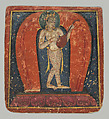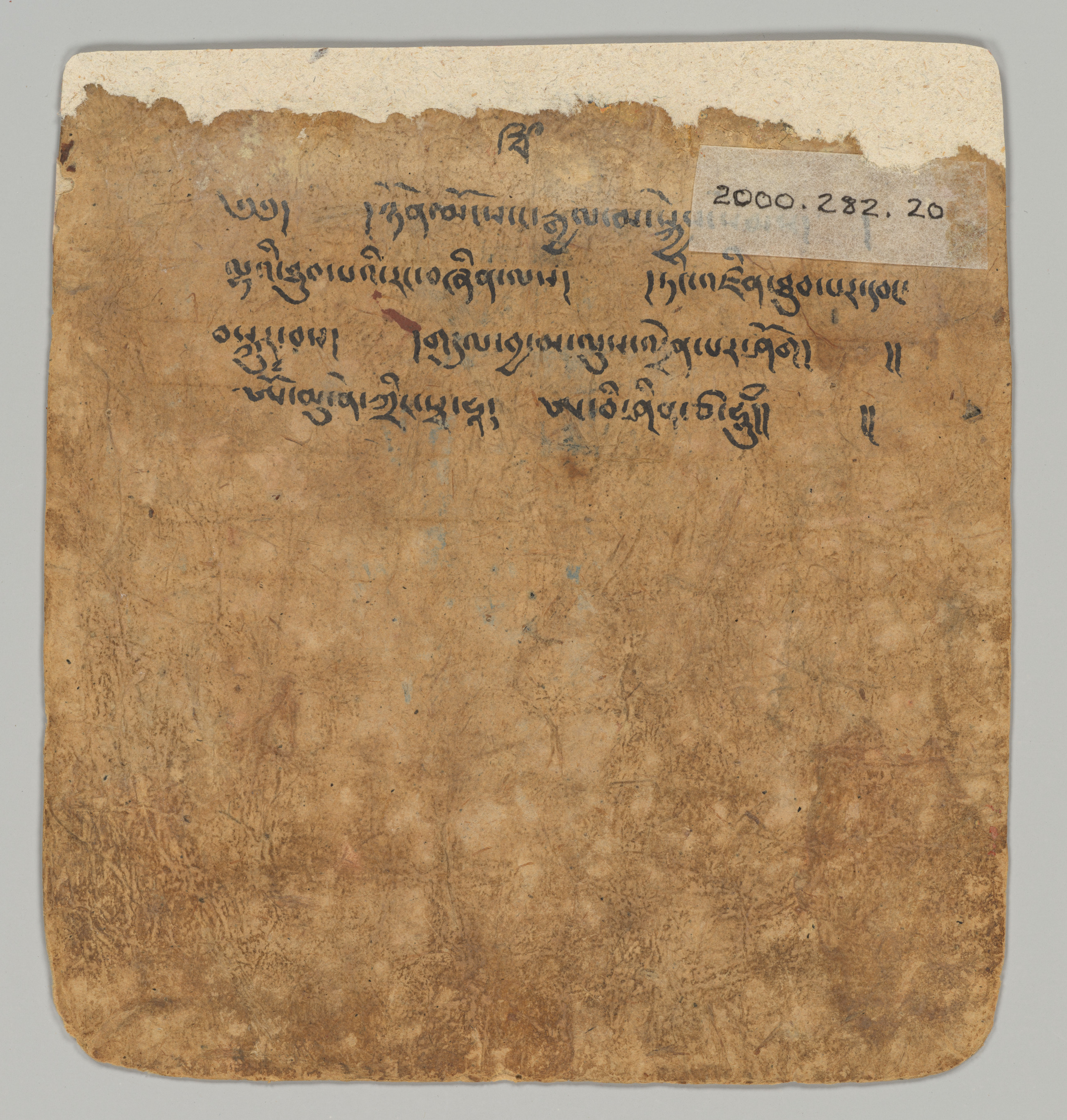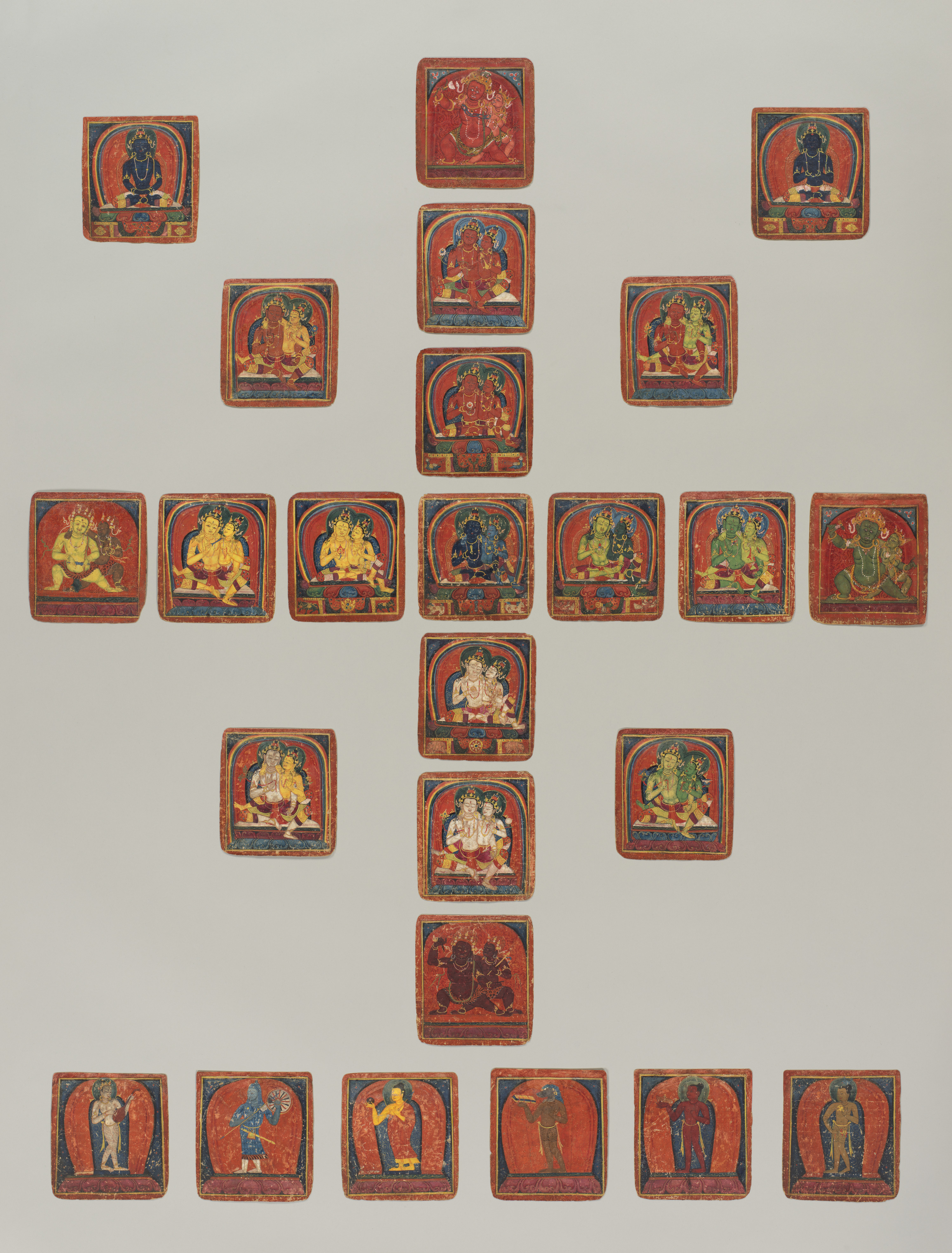Iniation Card (Tsakalis)
Not on view
Tsakali cards were used by itinerant teachers moving from one monastery to another in order to evoke Vajrayana Buddhist deities. When laid on the ground in the form of a mandala, as seen here, they functioned to create a fixed sacred space like that of a temple. The deities shown on these initiation cards include the Tathagata Buddhas, various bodhisattvas, fierce protectors, and the six possible realms of rebirth seen across the bottom. They probably were made by a Nepali artist for a Tibetan patron of the Nyingma school of Tibetan Buddhism.
Tsakali cards were used individually to align a disciple with a deity from the vast pantheon. First, the disciple sought permission from the deity, either through a dream or under the guidance of a teacher. The associated ritual involved visualizing the deity as described in recited mantras (incantations) and with an image—in this case, the deity represented on the tsakali.
The cards form a mandala if the first one is placed in the middle and the following cards are arranged clockwise, as is auspicious. The bodhisattvas Samantabhadra (male) and Sambantabhadri (female), appearing in the upper corners, have as their esoteric counterpart the central and most important figure, Vajrasattva. While there is no text explaining this mandala, the Maha Vairochana sutra tells us that Vajrasattva should be venerated in order to purify the mind prior to undertaking advanced tantric techniques. This accords with the inscriptions on the back of each card, which associate mental states with each deity and delusions, such as pride, jealousy, and hatred, with each of the possible rebirths. It is remarkable that these cards, perhaps the earliest set of tsakali that survives intact, together form a mandala suitable for the ritual of initiation.
Due to rights restrictions, this image cannot be enlarged, viewed at full screen, or downloaded.
This artwork is meant to be viewed from right to left. Scroll left to view more.





